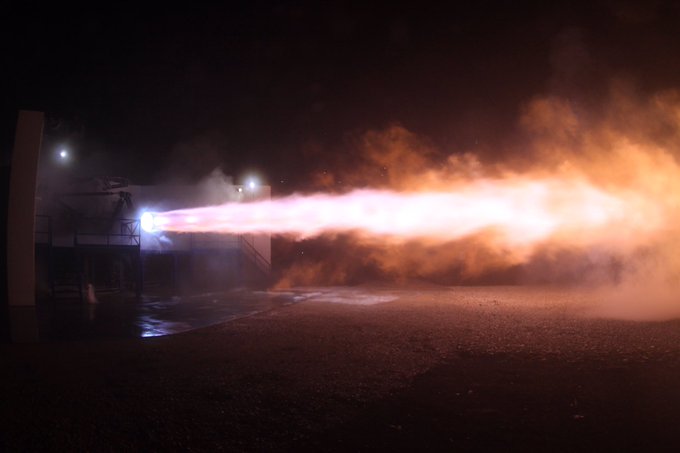SpaceX Successfully Test-Fires Mars Transport Rocket Engine, Prepares to Lay out Colonization Plans

Getting to Mars is only part of the problem of putting humans on the Red Planet. We’re already pretty good at that part, with plenty of robots roaming around up there right now. The tough part is putting a permanent presence in place so that it actually makes sense to go there, and Elon Musk’s SpaceX is making progress towards overcoming that difficulty.
First, they’ve got the first test-firing of their new Raptor rocket engine, which will be used in the next-generation launch vehicle designed to take a heavy, well-supplied spacecraft into the depths of space. Here’s what the engine looks like in action:
Mach diamonds pic.twitter.com/TCX7ZGFnN0
— Elon Musk (@elonmusk) September 26, 2016
That’s just one engine, though, and the rocket configuration SpaceX eventually uses for their Mars transport will have “a lot” of these in order to achieve the necessary thrust. Test-firing is good, but there’s still a long way to go before the full rocket configuration is not only ready, but deemed safe for use—something SpaceX has had some troubles with lately. Luckily for any Mars-bound astronauts, Musk is planning for the company’s crew capsule to be safely eject the crew in case of rocket explosion.
So that takes care of the “getting there” part, but what about the rest? Musk has previously stated that, for a Mars colony to be sustainable, we’d have to put at least one million people there over the long term. Mars is a fairly inhospitable environment for humans—cold, unbreathable, and radiation-soaked—so creating a habitat for all those people is no simple task. In the live stream embedded above, Musk is set to lay out the specific technical challenges that SpaceX is in the process of working out in order to get started on making all that happen.
Why the great unveiling of those challenges? Musk doesn’t see SpaceX doing it alone. The stream’s description states, “The technical presentation will focus on potential architectures for sustaining humans on the Red Planet that industry, government and the scientific community can collaborate on in the years ahead.” That timeframe is getting rather short, too, as the plan is for SpaceX to put astronauts on Mars as early as 2024. Let’s hope this call to action gets everyone in gear to make that happen.
(image via 20th Television)
(via Live Science, image via SpaceX)
Want more stories like this? Become a subscriber and support the site!
—The Mary Sue has a strict comment policy that forbids, but is not limited to, personal insults toward anyone, hate speech, and trolling.—
Follow The Mary Sue on Twitter, Facebook, Tumblr, Pinterest, & Google+.
Have a tip we should know? tips@themarysue.com